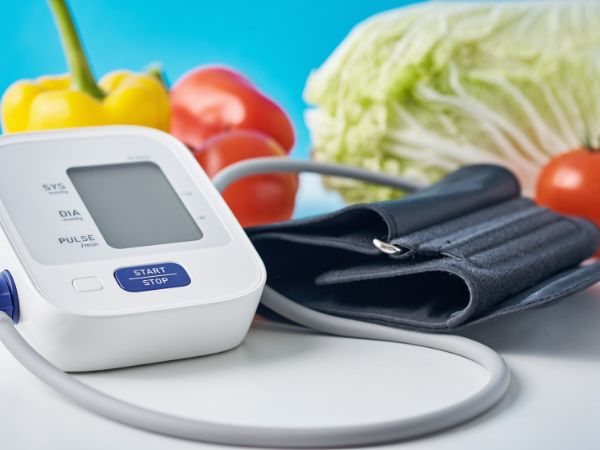Who hasn’t heard the saying, “An apple a day keeps the doctor away”? But what if I told you that there’s another trick up the sleeve that’s equally effective? Yep, you guessed it! Blood pressure monitoring. It’s not just a fleeting trend or a buzzword that’s here today, gone tomorrow. Monitoring your blood pressure can, quite literally, be a lifesaver. The health market is brimming with vitamins to lower blood pressure, but not all are as effective as they claim to be. For a natural and proven solution, consider adding NutriGrove’s Organic Beetroot Powder to your daily regimen. Its potent formula aids in promoting overall heart health and boosting energy.
Why All the Fuss About Blood Pressure Monitoring?
Blood pressure isn’t something you can see or feel. It’s like the wind – you can’t catch it with your bare hands, but you can surely feel its effects.
The Sneaky Nature of Hypertension
- It’s a Silent Enemy: Many folks dub hypertension as the “silent killer” because it often doesn’t show any clear symptoms.
- Numbers Matter: Knowing if you’re in the 120/80 ballpark or are hitting the highs of 140/90 is crucial. They say numbers don’t lie, and here, they could literally tell a story about your health.
- Prevention Beats Cure: Wouldn’t you rather catch a potential health problem in the bud? Well, that’s where blood pressure monitoring shines.
It’s Not Just for the Ill or the Elderly
Let’s bust a myth, shall we? Blood pressure monitoring isn’t just for your grandma or someone who’s been feeling under the weather. Nope. It’s for everyone, and it’s high time we got on board with it.
How to Monitor Blood Pressure Like a Pro
Hold onto your hats, folks, because here’s the nitty-gritty of blood pressure monitoring!
- Get a Reliable Monitor: This isn’t the time to pinch pennies. Invest in a monitor that’s received good reviews and is recommended by health professionals.
- Consistency is Key: Same time, same place, every day. Yep, make it a ritual.
- Position Matters: Sit with your feet flat on the ground, back supported, and arm at heart level. Sounds like a lot? Trust me, it’s a piece of cake once you get the hang of it.
- Record the Numbers: Either jot them down in a diary or use one of those snazzy apps. Whatever floats your boat!
History of Blood Pressure Monitoring
In the grand tapestry of medical history, the tale of blood pressure monitoring intertwines with moments of ingenuity and discovery.
Initial Recognitions
- Ancient Civilizations: The concept of blood circulation traces back to ancient civilizations like Egypt, but their understanding was limited to recognizing that the heart pumped blood.
- Revolution by William Harvey (1628): A turning point came when Harvey detailed the circulatory system, laying the groundwork for future innovations.
- Enter the Sphygmomanometer: The late 19th century saw Dr. Samuel Siegfried Karl Ritter von Basch invent the sphygmomanometer. Though rudimentary, it signaled the dawn of direct blood pressure measurement.
- Mercury to Digital: The 20th century experienced a shift from mercury-based sphygmomanometers to the digital monitors we’re familiar with today, thanks to advancing technology and increasing awareness of mercury’s environmental hazards.
Step-by-Step Process
Blood Pressure Monitoring 101
- Choose a Quality Monitor: From aneroid to digital, pick a device that suits your needs and budget.
- Position Correctly: Sit comfortably in a quiet place with feet flat on the ground, back supported, and arm rested at heart level.
- Place the Cuff: It should sit snugly above the elbow, leaving room for two fingers underneath.
- Start Measuring: With digital devices, it’s as simple as pressing a button.
- Interpreting Results: Understand the systolic (upper) and diastolic (lower) readings. Typically, 120/80 mm Hg is ideal.
- Record and Track: Maintain a log or use mobile apps to detect patterns.
Case Studies
1. A Tale of Misdiagnosis
Jane, an avid runner, always clocked high readings at her doctor’s office, leading to misdiagnoses and unnecessary medications. Home monitoring revealed her numbers were normal, indicating a classic case of “white coat syndrome.”
2. Lifestyle Intervention Success
Mark, having borderline high readings, took to home monitoring. The daily visualization of results inspired healthier choices, showcasing how monitoring can lead to proactive health decisions.
3. The Lifesaving Discovery
Ella, with no evident symptoms, stumbled upon alarmingly high readings during routine checks. Immediate medical intervention potentially saved her from a catastrophic event.
Benefits of Blood Pressure Monitoring
Socio-Economic Benefits
- Cost Savings: Early detection reduces hospitalizations, saving healthcare systems billions annually.
- Increased Workforce Productivity: Healthy individuals contribute more efficiently to the economy.
Psychological Benefits
- Empowerment: Monitoring allows individuals to take charge of their health.
- Peace of Mind: Regular checks ease anxiety related to health uncertainties.
Community-Based Benefits
- Public Health Policies: Data from widespread monitoring can shape public health strategies.
- Educative Drive: Communities become more informed about cardiovascular risks.
Challenges Faced
- Accessibility and Affordability: Not everyone can access or afford quality monitors.
- Misinformation: Incorrect technique or misinterpretation can lead to false alarms or complacency.
- Dependence on Technology: Over-reliance on digital readings might overshadow other essential health indicators.
Future Outlook
The next decade promises:
- Wearable Tech Integration: Think blood pressure smartwatches with real-time analytics.
- AI and Predictive Analysis: Devices might predict potential spikes based on lifestyle and genetic markers.
- Global Health Drives: Considering the universality of cardiovascular diseases, global initiatives might champion widespread monitoring, especially in low-income regions.
FAQs about Blood Pressure Monitoring
Why can’t I just get my blood pressure checked at the doctor’s office?
Well, you can. But monitoring at home gives you a clearer picture, helping to avoid “white coat syndrome” where your numbers spike just because you’re at the doc’s.
How often should I check?
If you’re just starting or have been flagged for high BP, daily checks are the way to go. If everything’s hunky-dory, a few times a week will do.
Is there a best time to monitor?
Early morning or evening usually works best. But hey, don’t get too bogged down with the specifics. Find what suits you and stick to it!
Common Mistakes to Avoid
Blood pressure monitoring isn’t rocket science, but a few blunders can throw a wrench in the works.
- Tight Sleeves: They can skew the results. Roll ’em up or go sleeveless.
- Full Bladder: Yep, even a full bladder can hike up those numbers.
- Rushing Through: Give yourself a good 5 minutes of quiet before you measure.
The Bigger Picture
Beyond the numbers, the heart of the matter (pun totally intended!) is your overall health. Blood pressure monitoring acts as a window, offering glimpses into your cardiovascular health, potential risks, and areas where a change could do a world of good.
Summary
Blood pressure monitoring isn’t just another health fad. It’s a ticket to longevity and good health. Remember, it’s not about being paranoid but being proactive. It’s like having an insurance policy where the premium isn’t money but a few minutes of your time. So, why wait? Dive into the world of blood pressure monitoring, and give yourself the peace of mind you deserve. Blood pressure monitoring, with its rich history and undeniable importance, remains a cornerstone in preemptive health care. The balance of its benefits against challenges and its promising future underscore its pivotal role in global health.







